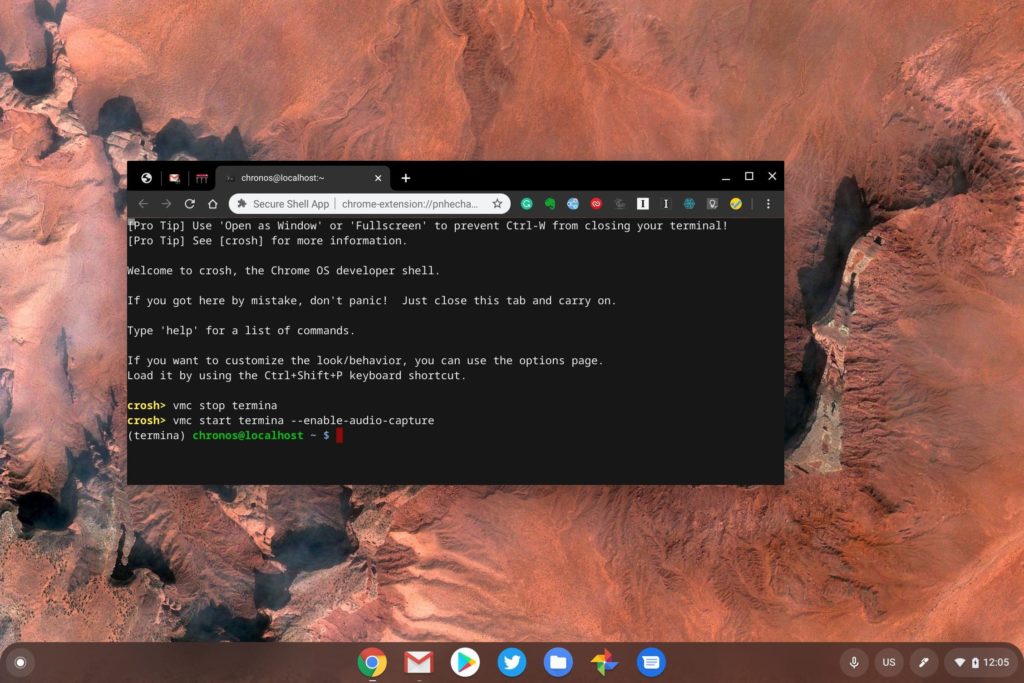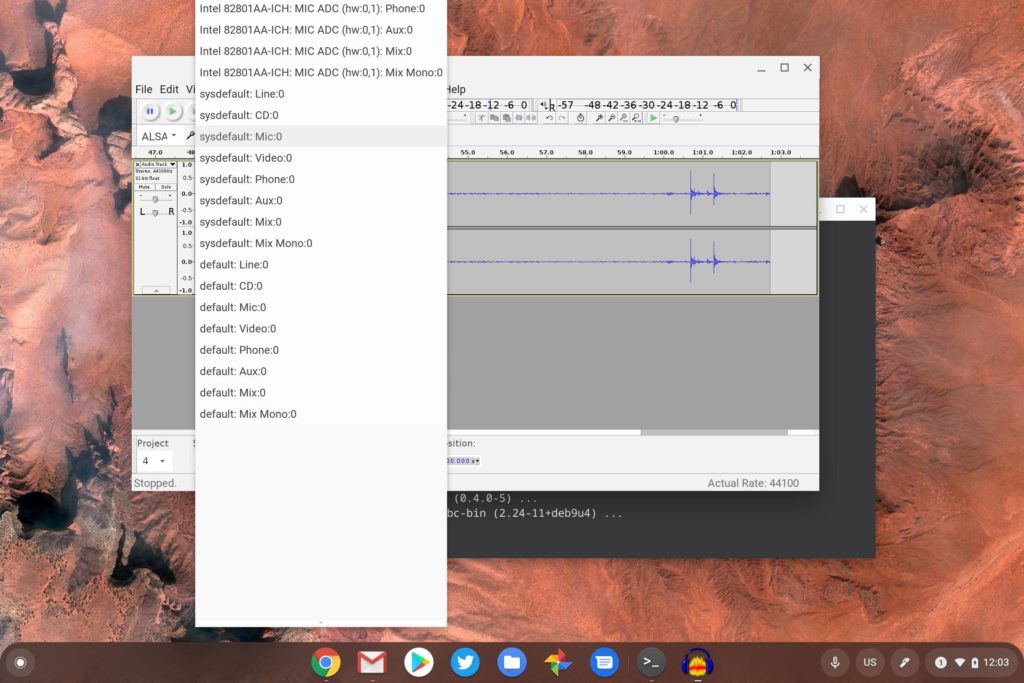At long last one of the major features I’ve missed from Linux on Chrome OS has arrived. And nobody even told us. I’m talking about audio capture in a Linux container on Chromebooks. You can actually use it now on the Chrome OS 79 Stable Channel that launched a few weeks ago.
Normally experimental new features are hidden behind a Chrome OS flag but audio capture hasn’t even reached that stage yet. Instead, you have to start Termina, the virtual machine where your Linux containers run on a Chromebook, with a command line flag.
To enable audio capture through either your Chromebook’s built-in microphone or a USB mic, go in the Chrome browser and press the ctrl – alt – T keyboard combination. This should open up what’s known as the crosh shell.
Next type the vmc stop termina command to shut down any currently running Termina VM. Then restart termina with this command: vmc start termina –enable-audio-capture. Then, simply launch your Terminal app.

Once you do, Linux apps will have access to any internal or external microphones.
I tested this with Audacity, an open-source audio application I’ve used for podcasting since 2006. I did have to choose the right audio input from the many listed options, but once I found the correct one — sysdefault: Mic 0 worked for my Samson USB mic — I was able to record and save audio.

This method to enable audio capture won’t be needed for long thankfully. It was added as a way to test the feature. A Chrome OS experimental flag will arrive in a future version of Chrome OS; I wouldn’t be surprised if it found its way into Chrome OS 80 since it’s a relatively small change to add a flag.
Eventually, just like GPU hardware acceleration, audio capture in Linux on Chromebooks will be enabled by default, although I wouldn’t expect that scenario for a few Chrome OS software versions yet.

